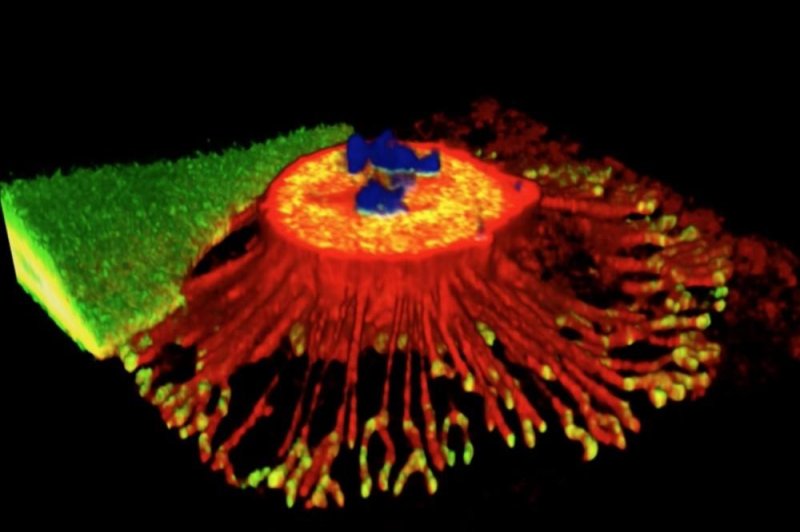Unlike other adhesion complexes, the new cell structure helps facilitate cell division in addition to helping cells attach to their surroundings. Photo by John Lock/Karolinska Institute
Oct. 23 (UPI) -- Scientists have discovered a new cell structure, a protein complex that helps cells attach to their surroundings and plays an important role in the cell division process.
Tissue cells are surrounded by a web-like structure called an extracellular matrix. To link to the matrix, receptor molecules on the cell surface produce large protein complexes, or adhesion complexes.
A team of researchers from Britain and Sweden have identified a new class of adhesion complexes called reticular adhesions.
"It's incredibly surprising that there's a new cell structure left to discover in 2018," Staffan Strömblad, lead researcher a professor of biosciences at Sweden's Karolinska Institute, said in a news release. "The existence of this type of adhesion complex has completely passed us by."
Adhesion complexes not only help cells attach themselves to their surroundings, they also help deliver information about the outside environment to the cellular membrane. Unlike other complexes, which dissolve during cell division, reticular adhesions remain intact.
"We've shown that this new adhesion complex remains and attaches the cell during cell division," said Strömblad.
Reticular adhesions help ensure the daughter cells are properly positioned in the wake of cell division. Newly divided cells weren't able to properly organize themselves when scientists blocked the formation of reticular adhesions.
While studying human tissue cells in the lab, scientists observed the new structure in action using confocal microscopy and mass spectrometry. Researchers detailed their observations in the journal Nature Cell Biology.
"Our findings raise many new and important questions about the presence and function of these structures," said Strömblad. "We believe that they're also involved in other processes than cell division, but this remains to be discovered."















